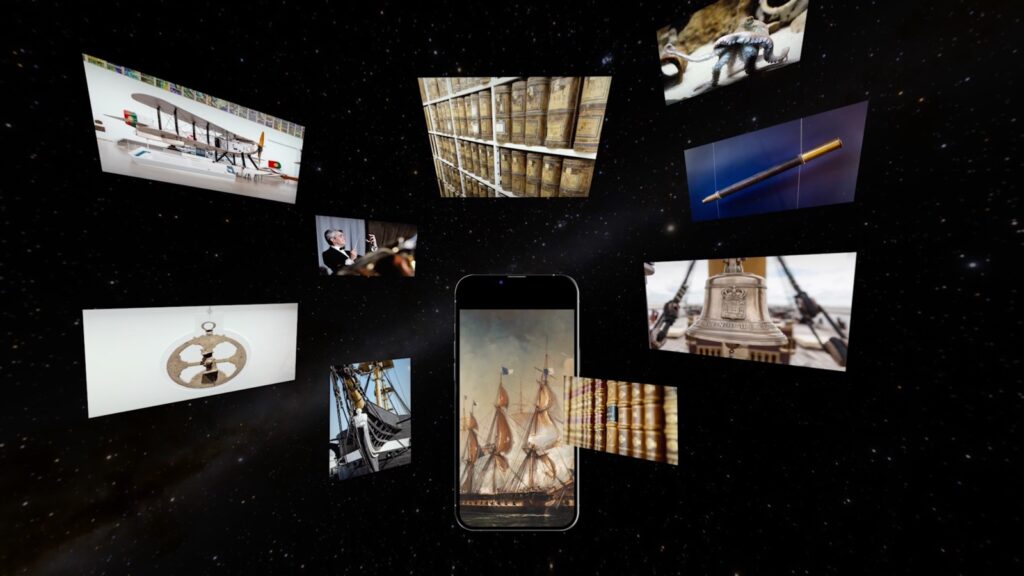More than 22 digital content from the Portuguese Navy can be seen online, starting tomorrow, February 1st, on Google Arts & Culture by the public around the world, due to the partnership between the two entities that generated the project “Portugal, a Maritime Legacy”. The chosen date marks the 706th anniversary of the formal creation of the Navy.
With more than 1 million and 300 thousand visitors in the last six years, the Navy's Cultural equipment is now also available to visitors online, allowing 360º visits, virtual exhibitions and photographs of the collections, continuing the work developed with older generations. young people, which began with the “Culture at Home” project.
The thousands of historical and scientific content, now available on the Google Arts & Culture platform, allow you to take an authentic journey through Portuguese maritime history over the last 500 years.
The Navy's cultural documents provide a perspective on the evolution of Portuguese ships over time and disclose the history of the Portuguese navy and merchant navy, while underlining the importance of the sea as a natural resource and source of biodiversity.
“Google Arts & Culture aims to bring cutting-edge technology to partners and support them in making their collections available to a global audience. The 'Portugal, a Maritime Legacy' project brings together hundreds of years of history, and we are very proud to have collaborated with the Navy to help them tell this unique story in the digital world, reinforcing the role of Google Arts & Culture and technology in the cultural sector”, highlights Helena Martins, responsible for public policies at Google for Portugal.
“For the Navy, the visibility and dimension that this project gives it is a very significant step”, says the director of the Cultural Commission of the Navy, Vice-Admiral Edgar Bastos Ribeiro.
“We started to make available to the world, with the collaboration of Google Arts & Culture, a vast and very rich maritime and marine heritage, of which Portugal is proud”.
“This project, «Portugal, a maritime legacy», will bring even more Portuguese visitors from all over the world to the Navy’s cultural facilities” and we are convinced that it will contribute to creating an even stronger connection to the “Sea that is ours”, says vice-admiral Bastos Ribeiro, also highlighting the “pioneering spirit of the Navy”.
The availability of the collection of the Vasco da Gama Aquarium, Banda da Armada, Central Library of the Navy, Frigate D. Fernando II and Glória, Museum of the Navy and Planetarium of the Navy is the result of two years of work to survey, inventory and catalog all the materials, making them available to the general public, students, scientists, researchers, those interested in maritime themes and higher education institutions.
Areas such as Biology, Music, Documental Sciences, History, Astronomy or Affairs of the Sea are examples of the multiplicity of areas of knowledge of the Navy's cultural equipment that you will be able to find in an accessible way, from now on, on Google Arts & Culture.
Thus, the Portuguese Navy makes its historical heritage available virtually, at the forefront of integrating technology in the preservation, promotion and dissemination of Portuguese cultural heritage, asserting itself as an indispensable partner in the affirmation of Portugal's interests at sea.
O Google Arts & Culture brings together, at your fingertips, treasures, stories and knowledge from over 2.000 cultural institutions from 80 countries. If Google's mission is to make the world's information more accessible, then Arts & Culture's mission is to make the world's culture accessible to anyone, anywhere.
It's your gateway to exploring the art, history and wonders of the world. Discover stories about cultural heritage ranging from Van Gogh's bedroom painting, Puerto Rico heritage, Sports in Australia, the women's movement in the fight for women's rights, passing through ancient Mayan temples, Japanese food and paths indian iron.



















Comments